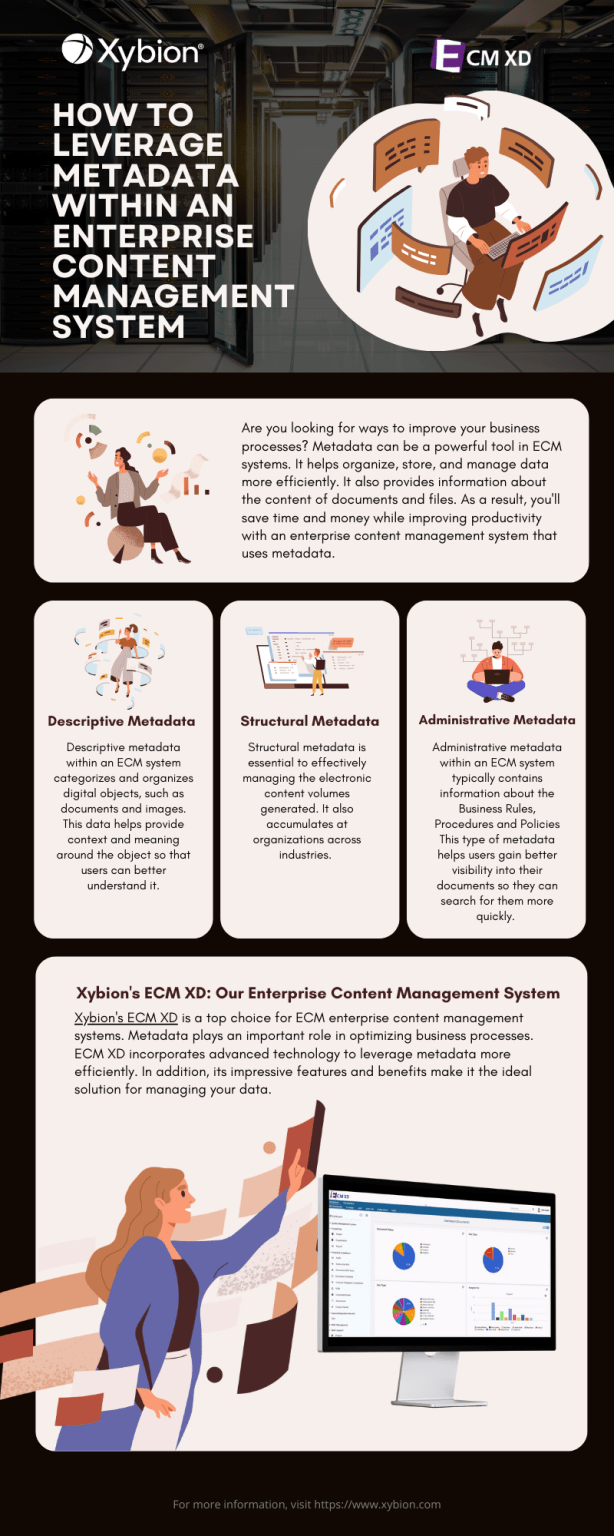Home › How to Leverage Metadata Within an Enterprise Content Management System

Did you know that most laboratories and research centers struggle with organizing and reusing their findings? Metadata is one of the best practices for researchers to track their findings. In fact, metadata allows for data that is FAIR, findable, accessible, interoperable, and reusable.
Are you looking for ways to improve your business processes? Metadata can be a powerful tool in ECM systems. It helps organize, store, and manage data more efficiently.
It also provides information about the content of documents and files. As a result, you’ll save time and money while improving productivity with an enterprise content management system that uses metadata.
Read this article to learn more about how metadata can help your business today.
Metadata can be a powerful tool for modern businesses using an enterprise content management (ECM) system. There are three main types of metadata:
All of which have different uses and benefits. To make the most of metadata in an ECM system, it’s important to understand how each type works and how they interact.
Designing effective workflows and utilizing automated processes can help manage and organize content. Businesses can ensure that their content remains organized and accessible.
Let’s look at the three types of metadata and how they are useful in an ECM system.
Descriptive metadata within an ECM system categorizes and organizes digital objects, such as documents and images. This data helps provide context and meaning around the object so that users can better understand it.
It is often combined with technical and structural metadata to create a full picture of the object. Examples of descriptive metadata can include:
This way, descriptive metadata allows for easy retrieval of digital objects documented or stored in the ECM system.
Structural metadata is essential to effectively managing the electronic content volumes generated. It also accumulates at organizations across industries. It is a set of rules and guidelines that define how an organization handles data with regard to:
Structural metadata also explains how files are formally related or in contexts, such as dates or project topics. Moreover, it has:
This allows the user to process content quickly by providing fast searches and navigation abilities. All this makes structural metadata a critical component within any ECM system.
Administrative metadata within an ECM system typically contains information about the
This type of metadata helps users gain better visibility into their documents so they can search for them more quickly. Administrative metadata can include:
With this information in place, organizations can better manage the administrative aspects of ECM. They can also keep their content more organized and easier for users to find.
Metadata is an incredibly powerful tool to improve business processes such as:
Businesses can quickly categorize data by:
For example, descriptive metadata can be used in information retrieval. It can provide useful context for the documents users wish to find. In addition, structural metadata can help guide processes such as searching for files across different systems.
Meanwhile, administrative metadata can ensure that the right people have access to the right information. It allows organizations and laboratories to keep their information secure. This way, businesses can maximize their efficiency while quickly finding what they need when it’s needed.
Overall, ECM systems and metadata go hand in hand. Without metadata, ECM systems would not be able to perform at their full potential.
By implementing the right type of metadata, businesses can ensure that their ECM system meets their needs. This leads to improved processes and increased efficiency. Organizations can gain a competitive advantage and achieve greater success with an effective ECM system.
Xybion’s ECM XD is a top choice for ECM enterprise content management systems. Metadata plays an important role in optimizing business processes. ECM XD incorporates advanced technology to leverage metadata more efficiently. In addition, its impressive features and benefits make it the ideal solution for managing your data.
The built-in taxonomy functionality allows users to customize the naming of fields and folders. This makes it easier to locate information. Other features are all included, such as:
Additionally, the approval process feature streamlines the document review process. It helps your team increase productivity without sacrificing accuracy.
Ultimately, ECM systems with metadata are essential for businesses looking to optimize their operations. With Xybion’s Enterprise Content Management XD, you can take advantage of the power of metadata. You can also transform your organization into an effective content management machine.
Enterprise content management systems with metadata are essential for businesses looking to optimize their operations. With Xybion’s ECM XD, you can take advantage of the power of metadata and transform your organization into an effective content management machine.
Now is the time to unlock the potential in all your data. Let us show you how we can make it happen!
Book a demo today if you’re ready to get started on improving business processes through ECM systems! Our team is standing by to help answer any questions you may have and walk you through how our enterprise content management system works.
We use cookies to improve your experience. By continuing to use our site, you accept our use of cookies. Privacy Policy and Terms of Use.
Cookie SettingsAccept